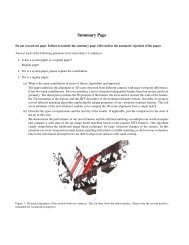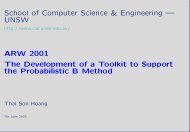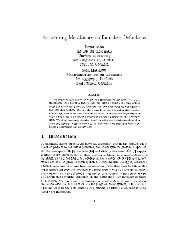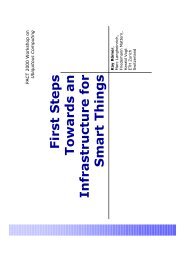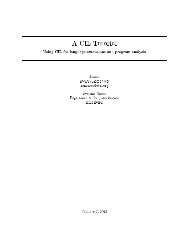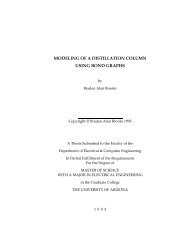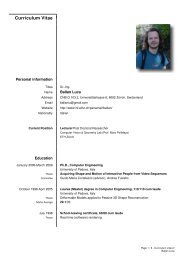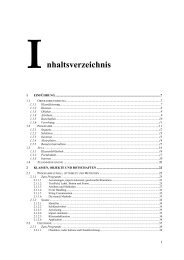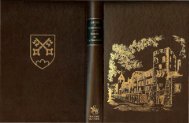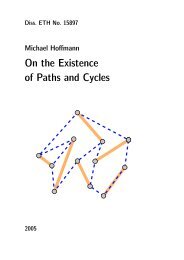Fast Robust Large-scale Mapping from Video and Internet Photo ...
Fast Robust Large-scale Mapping from Video and Internet Photo ...
Fast Robust Large-scale Mapping from Video and Internet Photo ...
You also want an ePaper? Increase the reach of your titles
YUMPU automatically turns print PDFs into web optimized ePapers that Google loves.
photo collections. Here we discuss the most related work in the areas of fast<br />
structure <strong>from</strong> motion, camera registration <strong>from</strong> <strong>Internet</strong> photo collections,<br />
real-time dense stereo, scene summarization, <strong>and</strong> l<strong>and</strong>mark recognition.<br />
Besides the purely image based approaches there is also work on modeling<br />
the geometry by combining cameras <strong>and</strong> active range scanners. Früh <strong>and</strong><br />
Zakhor [4] proposed a mobile system mounted on a vehicle to capture large<br />
amounts of data while driving in urban environments. Earlier systems by<br />
Stamos <strong>and</strong> Allen [5] <strong>and</strong> El-Hakim et al. [6] constrained the scanning laser<br />
to be in a few pre-determined viewpoints. In contrast to the comparably expensive<br />
active systems, our approach for real-time reconstruction <strong>from</strong> video<br />
uses only cameras leveraging the methodology developed by the computer<br />
vision community within the last two decades [7, 8].<br />
The first step in our systems is to establish correspondences between the<br />
video frames or the different images of the photo collection respectively. We<br />
use two different approaches for establishing correspondences. For video data<br />
we use an extended KLT tracker [9] that exploits the inherent parallelism<br />
of the tracking problem to improve the computational performance through<br />
execution on the graphics processor (GPU). The specific approach used is<br />
introduced by Zach et al. in detail in [10].<br />
In the case of <strong>Internet</strong> photo collections we have to address the challenge<br />
of dataset collection, which is the following problem: starting with the<br />
heavily contaminated output of an <strong>Internet</strong> image search query, extract a<br />
high-precision subset of images that are actually relevant to the query. Existing<br />
approaches to this problem [11, 12, 13, 14, 15] consider general visual<br />
categories not necessarily related by rigid 3D structure. These techniques<br />
4



